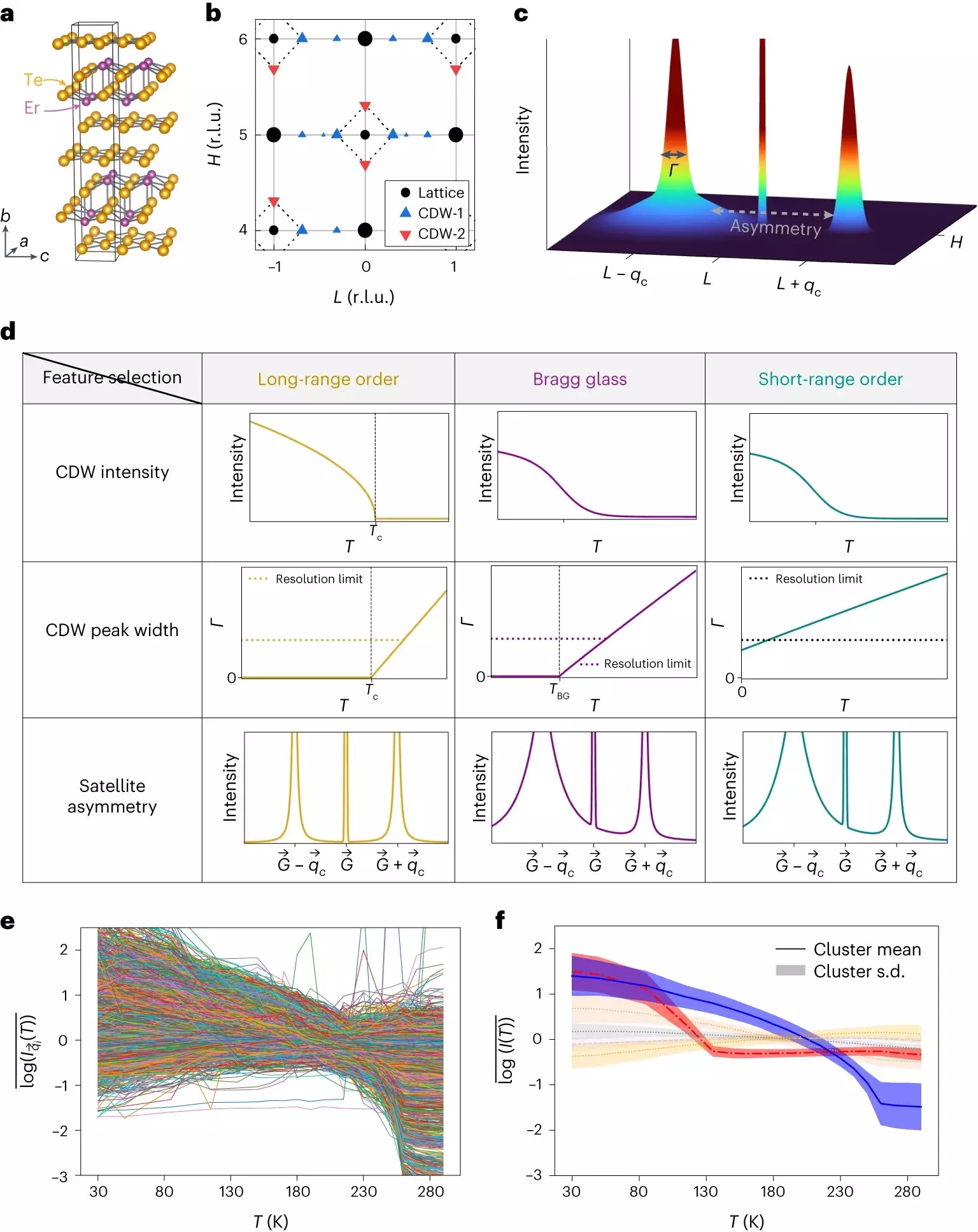Cornell University quantum researchers have made a groundbreaking discovery in the field of materials science by detecting and characterizing a previously elusive phase of matter known as the Bragg glass phase. This achievement has settled a long-standing question regarding the existence of this state in real materials. By harnessing the power of large volumes of X-ray data and employing a novel machine learning data analysis tool, the researchers have made significant strides in understanding the behavior of complex systems. This article delves into the details of the research and its implications for the field of materials science.
The Bragg Glass Phase: A Theoretical Puzzle
For over three decades, scientists have speculated about the existence of the Bragg glass phase, which is characterized by an almost-ordered state of matter. In this phase, the charge density wave (CDW) correlation decays slowly, leading to a unique behavior that distinguishes it from other phases. Long-range order and a disordered state are the two other phases that exhibit contrasting properties. The challenge lied in experimentally detecting and confirming the existence of the Bragg glass phase, given the influence of various factors such as noise and limited resolution in experimental setups.
The team of researchers, led by Krishnanand Madhukar Mallayya and Eun-Ah Kim, overcame these challenges by adopting a strategic approach that combined advancements in materials science, data analysis, and machine learning algorithms. They identified a family of CDW materials, specifically PdxErTe3, that allowed for a systematic study with control over potential experimental errors. Additionally, they collected a vast amount of X-ray data through a collaboration with scientists at Argonne National Laboratory. The researchers then utilized a newly developed machine learning tool called X-ray Temperature Clustering (X-TEC) to analyze the massive volume of data efficiently.
Beyond the specific scientific problem addressed in this study, the researchers emphasized the broader implications of their work. They highlighted the emergence of a new mode of research in the age of big data, where machine learning tools and data-driven perspectives enable scientists to tackle complex questions and unveil subtle signatures through comprehensive data analysis. This groundbreaking approach has the potential to revolutionize the way researchers study fluctuations and interplay between disorder and order in scattering experiments.
Advancing our Understanding of Complex Matter
The successful detection and characterization of the Bragg glass order has significantly advanced our understanding of the behavior of complex materials. The resulting phase diagram sheds light on the intricate interplay between disorder and fluctuations, revealing previously unknown insights into the fundamental nature of matter. In particular, the utilization of X-TEC to target fluctuations through a high-throughput measure of “peak spread” opens up new possibilities for studying fluctuations in scattering experiments. These advancements pave the way for further exploration and manipulation of materials with unique properties, potentially leading to breakthroughs in various fields such as electronics, quantum computing, and advanced materials design.
Through a combination of innovative experimental techniques, extensive data analysis, and machine learning algorithms, Cornell quantum researchers have successfully detected and characterized the elusive Bragg glass phase. This groundbreaking achievement settles a long-standing question regarding the existence of this unique phase of matter and significantly advances our understanding of complex materials. The research brings to light a new mode of scientific inquiry enabled by large data sets and data-driven perspectives, revolutionizing the study of fluctuations and disorder in materials science. With these newfound insights, scientists are poised to embark on groundbreaking research in various fields, pushing the boundaries of our understanding and unlocking the potential of complex matter for technological advancements.


Leave a Reply